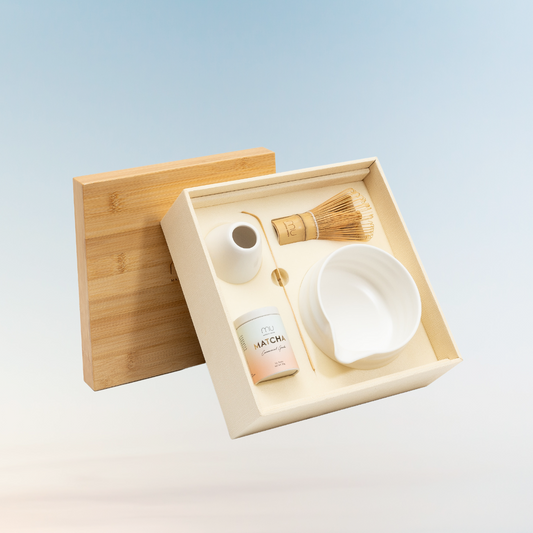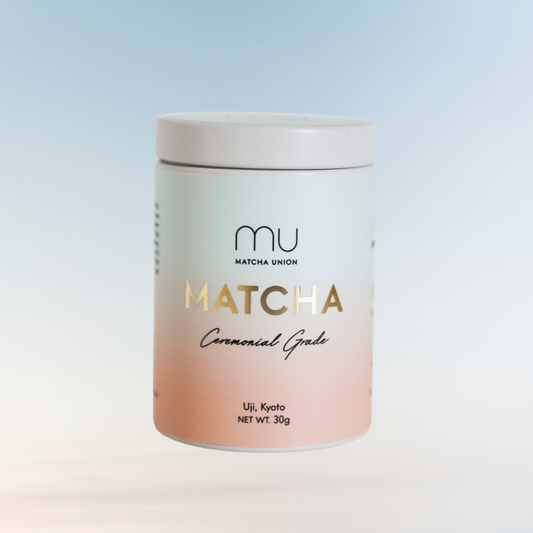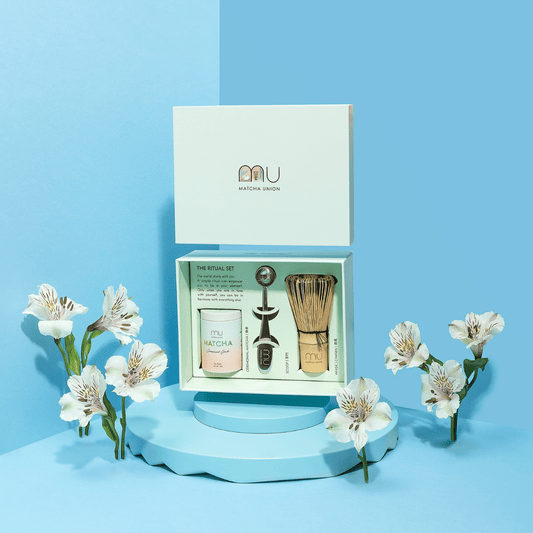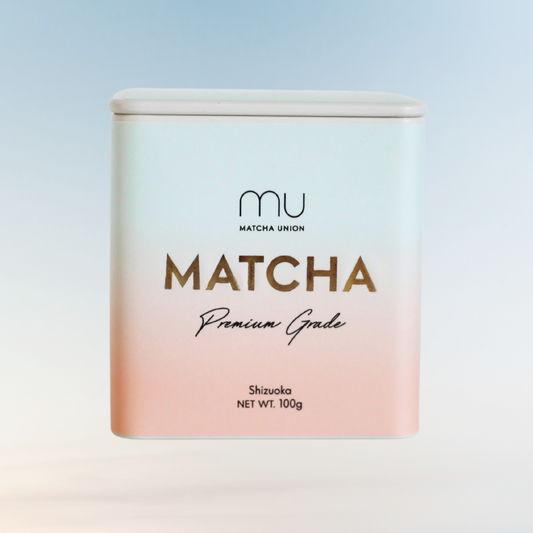
How Matcha Is Made: From Farm to Cup
Matcha is more than just a trendy green tea powder—it’s a centuries-old Japanese tradition that blends horticultural expertise with precision processing. Behind its vibrant color, umami flavor, and frothy texture is a meticulous production journey that starts long before it reaches your cup. In this post, we’ll explore how matcha is produced, from the cultivars used to the final milling process.
🌿 Cultivar Types: The Genetic Roots of Matcha Quality
Matcha begins with the right tea plant variety, or cultivar, which determines much of the tea’s flavor, aroma, and color. The most commonly used matcha cultivars in Japan include:
- Yabukita: The most widely grown cultivar in Japan, known for its balanced flavor and strong aroma. It produces a slightly bitter, robust matcha with a fresh grassy note.
- Okumidori: A late-harvest cultivar with a smooth, mellow flavor and deep green color. It’s often blended with other cultivars for balance.
- Samidori: Favored in Kyoto for high-end matcha. It has a mild taste and produces a brilliant green powder.
- Uji Hikari: Valued for its umami and vibrant color, often used in ceremonial-grade matcha.
Each cultivar responds differently to shading, weather, and soil, making cultivar selection essential to achieving premium matcha quality.
📍Where Is Matcha Usually Produced?
Japan is the heartland of matcha production, with several key regions standing out:
- Uji (Kyoto Prefecture): The most famous and historic matcha-producing region, known for its refined, umami-rich teas and deep cultural roots in the Japanese tea ceremony.
- Nishio (Aichi Prefecture): A major producer of matcha, especially for large-scale distribution. Nishio matcha is often vibrant in color with a well-balanced, mellow taste.
- Yame (Fukuoka Prefecture): Renowned for high-quality gyokuro and now increasingly recognized for premium matcha production. Yame matcha is noted for its rich umami, smooth mouthfeel, and vivid green hue—thanks to the area's ideal misty climate and fertile soil.
- Shizuoka and Kagoshima Prefectures: Also significant contributors to Japan’s tea output, offering diverse cultivars and growing conditions suited for both traditional and modern matcha production.
Shaded cultivation, cool climate, and fertile volcanic soils all contribute to the superior quality of Japanese matcha.
💚 The Matcha Production Steps: A Story from Leaf to Powder
The journey of matcha begins long before it’s whisked into a frothy bowl. It’s a tale rooted in patience, precision, and centuries of craft. Every stage is part science, part art—and every leaf has a story. Let’s follow the life of matcha from its sunny beginnings to its silky, emerald finish.
• The Birth of a Leaf – Cultivation and Care 🌱
In the misty hills of places like Uji, Yame, and Kagoshima, tea farmers tend rows of Camellia sinensis bushes with the dedication of artisans. They don’t rush—they nurture. The soil is rich, the air is crisp, and each plant is pruned to perfection.
Farmers carefully choose the cultivar: maybe Yabukita for balance, Okumidori for deep green richness, or Samidori for that smooth, Kyoto-style elegance. As spring awakens, the young shoots stretch toward the sky—soft, sweet, and ready for the spotlight.
• The Gentle Darkness – Shading the Fields ☀️➡️🌑
About 20 to 30 days before harvest, something magical happens: the sunlight disappears. The tea fields are covered with traditional reed screens or black mesh, plunging the plants into twilight.
Why? With less sunlight, the leaves boost their chlorophyll (for that vibrant green 💚) and L-theanine (for sweet, savory umami 😋), while bitterness stays low. The shading is increased gradually, almost like easing them into a dream.
• The First Harvest – A Moment of Precision ✂️🌸
When the leaves are just right—late April to early May—it’s time for the Ichibancha, the first flush. This is the best of the best, and the picking is done with care and tradition.
Only the youngest, softest leaves are taken—the baby tops full of nutrients and flavor. High-end matcha is often hand-picked, leaf by leaf. It’s slow, yes—but it ensures the tea is gentle, vibrant, and smooth. Quality over quantity, always.
• The Breath of Steam – Locking in the Goodness 💨🍃
Fresh from the field, the leaves are steamed for about 30 seconds—just enough to stop oxidation. This keeps them bright green and preserves that fresh, grassy aroma.
It’s a short moment, but a powerful one. Without the steam, the magic fades. Afterward, the leaves are quickly cooled and dried, ready to take on a new form.
• Becoming Tencha – The Hidden Hero 🦸🌿
Now comes the tencha stage—the unsung hero of matcha. Once dried, the leaves are stripped of stems and veins, leaving only the softest, flattest parts. These delicate leaf flakes are what will become matcha.
Unlike other green teas, tencha isn’t rolled. It’s light and airy, like confetti. Farmers store it carefully in cool, dark places until it's time for its final transformation. Think of it as aging a fine wine—patience makes perfection.
• The Final Transformation – Grinding the Leaf 🌀🎐
Now comes the slowest, quietest, most mesmerizing part of the journey. Tencha enters the stone mill, where it’s ground into the powder we know as matcha. But here’s the twist: the mill only turns 30 times a minute—super slow, on purpose.
Too fast, and the heat ruins the color and flavor. Too rough, and the powder won’t be smooth enough to whisk. Each granite mill can only produce 30–40 grams per hour—just enough to fill a small tin. Slow and steady wins the race (and wins your taste buds).
And finally… matcha is born. 🌟 A bright, silky powder full of flavor, aroma, and soul. It’s more than tea—it’s time in a cup. From careful cultivation to slow grinding, matcha carries the heart of tradition and the hands of generations.
So next time you sip a frothy bowl, remember: you’re not just drinking tea. You’re tasting a story. 📖🍵
Ready to taste the difference?
Whether you're a longtime tea lover or just getting started on your matcha journey, now you know what goes into every vibrant scoop. Treat yourself to high-quality, traditionally stone-ground matcha—and experience the craft, culture, and calm for yourself.
👉 Explore our curated Matcha Collection





